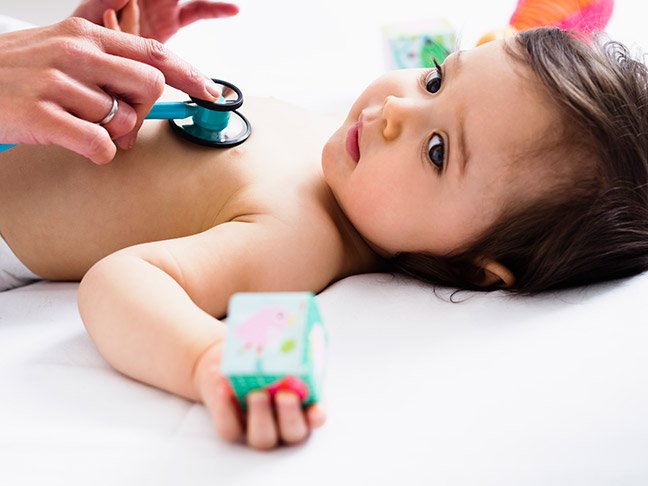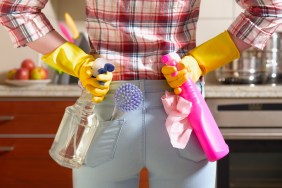Sometimes the flukiest things happen that make me truly think God or the universe really is paying attention to little ol’ me.
A couple of months ago, I was given the opportunity to test drive a breastmilk screening kit for free. Of course, I said yes. I pumped the requested ounces of milk and shipped it off to a lab in California. About a week later, I got an email that included a 10-page PDF with not just my lab results but also personalized dietary recommendations based on how my milk performed in the screening.
Everything looked totally healthy until I got to the last page and learned my milk had elevated levels of water soluble mercury. Around this same time, my daughter tested positive for lead poisoning during a routine screening with her pediatrician. Could it have been my milk or something else? Regardless, lead poisoning is no joke.
How in the blazing hell did this happen!? It turns out that lead is an insidious problem. After my daughter was diagnosed with lead poisoning, the state CDC got involved, and my whole family was tested, our house was tested (every single door, window, floor, ceiling, and all the furniture). Along the way, we learned a lot of important information that, had we known earlier, could have prevented my daughter’s lead poisoning. Here are the biggest takeaways about lead poisoning that I want to share with you.
Babies are especially vulnerable to lead poisoning
A lead poisoning diagnosis is based on a numerical scale. Blood lead levels that register at 5 or more micrograms per deciliter is considered lead poisoning. My daughter scored an 11. The CDC used to consider anything at 15 or higher to be lead poisoning, but as they learned more about the long-term effects of lead poisoning, that benchmark was lowered. To be treated for lead poisoning, an individual would have to score 45 or higher. My daughter likely sucked on a toy or pacifier that came in contact with lead dust. It would have taken only one or two exposures like this to give her a score of 11, we learned from the lead inspector who came to our home.
Lead hides in some super-obvious places
If you live in a home that was built before 1975 then you may as well assume that there is lead. My home was built in the 1930s, but we had restored much of the inside, so we thought we were free and clear of any problems with lead. We did not, however, replace all of the windows. We loved the old look of the original doors so we left those intact. All bad ideas.
You can have a house full of lead paint and it won’t hurt you as long, as it isn’t failing and creating paint chips or dust. Once that happens, then lead can get literally everywhere. You know that really cool cracked-look that old paint has? That alligator-skin-like texture is a big giveaway that you’ve got failing lead paint. Our upstairs windows all had failing lead, a fact we were woefully unaware of. In theory, every time we opened a window, invisible lead dust could have been blown all through our house, covering every surface.
Getting rid of lead is a giant pain but totally necessary
To get rid of lead, you have to go through something called lead abatement, which is extremely expensive and time-consuming. We were given a tutorial on how to DIY our way through it, but even still, we spent a lot of time and money trying to make sure we did it right.
Not only did all surfaces have to get a wet sweep—in which we basically mopped every single surface then threw away the rags we used—but we also had to paint over wood surfaces to stop failing paint from spreading dust. In addition, we had to replace sections of walls and doors. Talk about fun weekends.
People unwittingly bring lead into their homes all the time
The lead inspector told us that in newer, lead-free homes, DIY projects are the primary cause of lead exposure. All those pallet projects on Pinterest? Yeah, don’t do those unless you use brand new pallets. You can’t know what materials were used on those “authentic” and “rustic” pallets. And those cool antique farm doors you snatched at an estate sale? You’re basically bringing lead into your house. Unless you’re 100 percent certain that something is lead-free, then it just isn’t worth the risk.
Getting rid of lead poisoning takes a long time
Lead poisoning takes a long time to get rid of. My daughter is still taking iron drops to help protect her blood. The idea is that her body will grab the iron instead of the lead, giving her system chance of flushing out the lead. She will be retested three months from the date of her first blood draw. In the meantime, every toy of hers that touches the floor makes me nervous enough to toss in the sink to be cleaned. Even though we went through the lead abatement process, I still find myself getting freaked out by our house.
If you suspect lead in your house then contact your local health department immediately.
Photo: Getty Images








